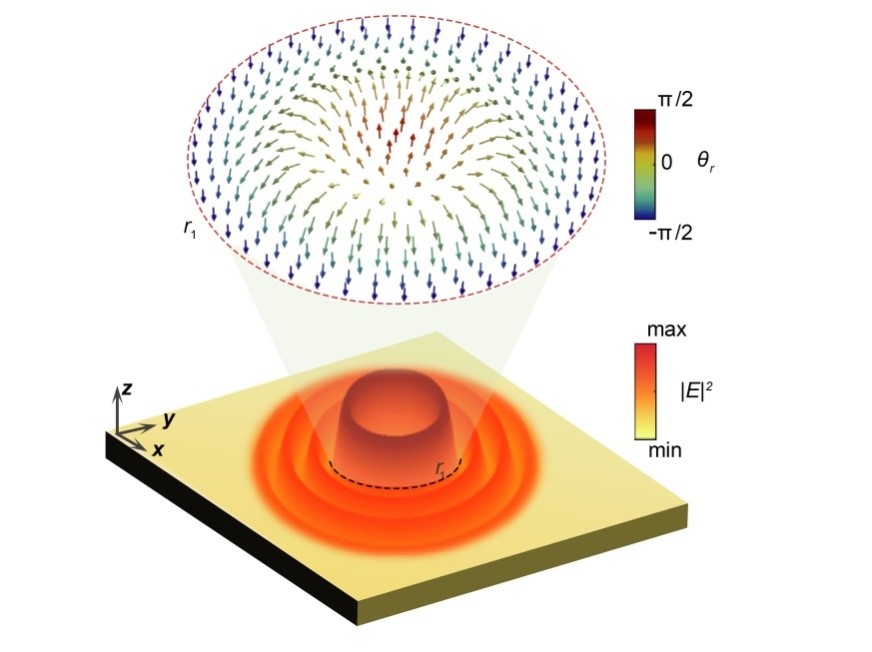Recently, the Chinese Laser Press (CLP) announced the 2019 Award for China’s Top Ten Optical Discoveries. Twenty profound findings--ten in basic and ten in applied research respectively--were awarded, including quantum key distribution system, photonic circuits, intelligent laser, and full-color laser displays.The research project “Deep-Subwavelength Features of Photonic Skyrmions in a Confined Electromagnetic Field with Orbital Angular Momentum” conducted by Prof. Luping Du and Xiaocong Yuan, from Nanophotonics Research Centre, Shenzhen University, won the award in basic research. It is reported that the findings, for the first time globally, unveils the structure ofskyrmions, nanoscale regions caused by the changesin the orientation of the electron spin associated with a vortex-type manner, raising a brand-new viewpoint for light field modulation at nanoscale.

Here follows the extract from the original paper, published in April, 2019 in Natural Physics. “In magnetic materials, skyrmions arenanoscale regions where the orientation of the electron spin changes in a vortex-type manner. Electromagnetic waves carry both spin and orbital angular momenta. Here we show that spin–orbit couplingin a focused vector beam results in a skyrmion-like structure of local photonic spin. While diffraction limits the spatial size of intensity variations, the direction of the electromagnetic field, which defines the polarization and local photonic spin state, is not subject to this limitation. We demonstrate that the local spin direction in the skyrmion-like structure varies on the deep-subwavelength scale down to 1/60 of the light wavelength, which corresponds to a length scale of about 10 nm. The application of photonic skyrmions may range from high-resolution imaging and precision metrology to quantum technologies and data storage where the local spin state of the field, not its intensity, can be applied to achieve deep-subwavelength optical patterns.”
It is the sixth year that this event of recognition has been held, since the first launch by CLP. Candidates for this honor are selected from universities nationwide and research institutes affiliated with the Chinese Academy of Sciences.China’s ten mostinnovative and important discoveries of basic research in optics and ten of applied research are awarded annually, to promote the dissemination of findings in the subject.
This year’s evaluation processwent through three rounds: recommendation, preliminaryassessment, and final assessment, with 20 out of 110 scientific works surpassing the others to be honored as China’s Top Ten Optical Discoveries of 2019.
The judging panel, consisting of 48 experts in optics and photonics, selected 30 findings for the last round of the appraisal after a comprehensive evaluation of each work’s academic and application value, and receivers of the award were elected by secret ballot.

